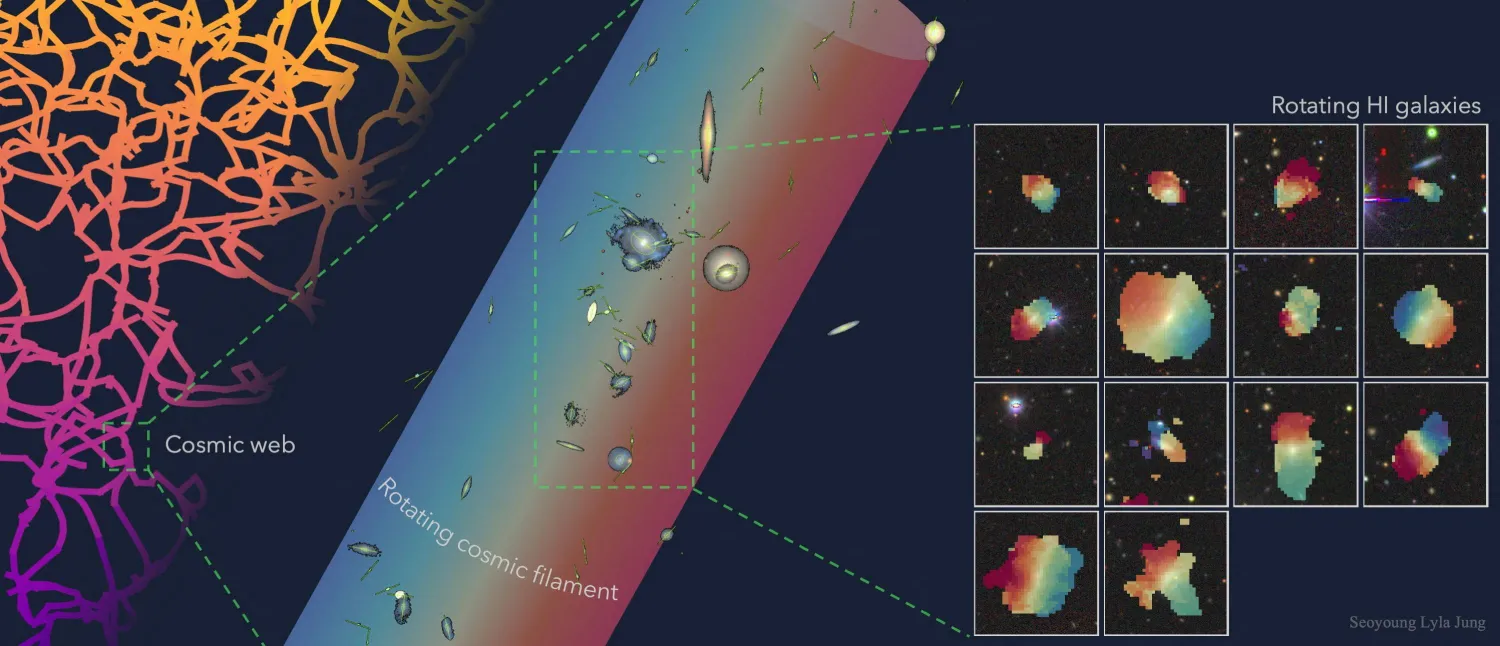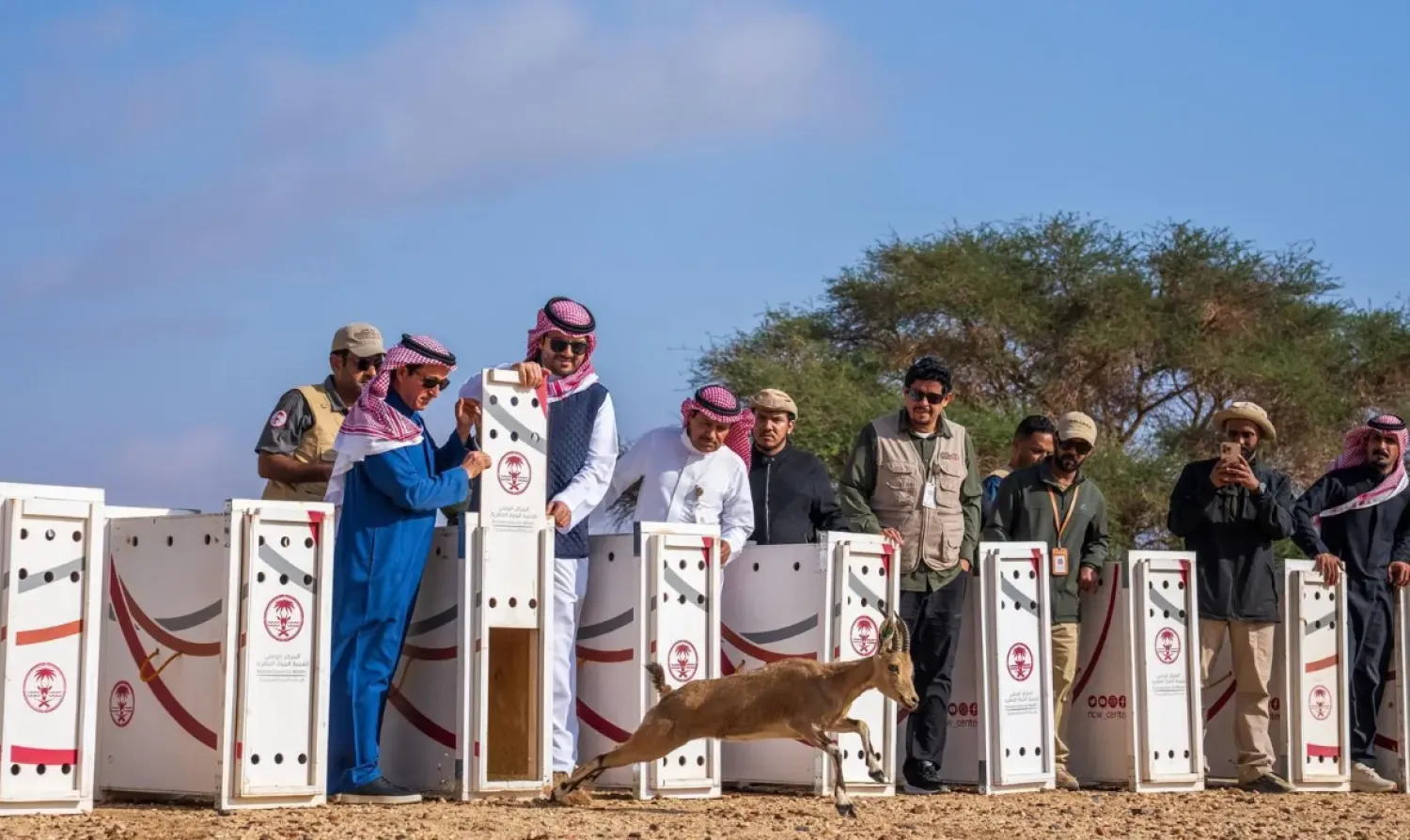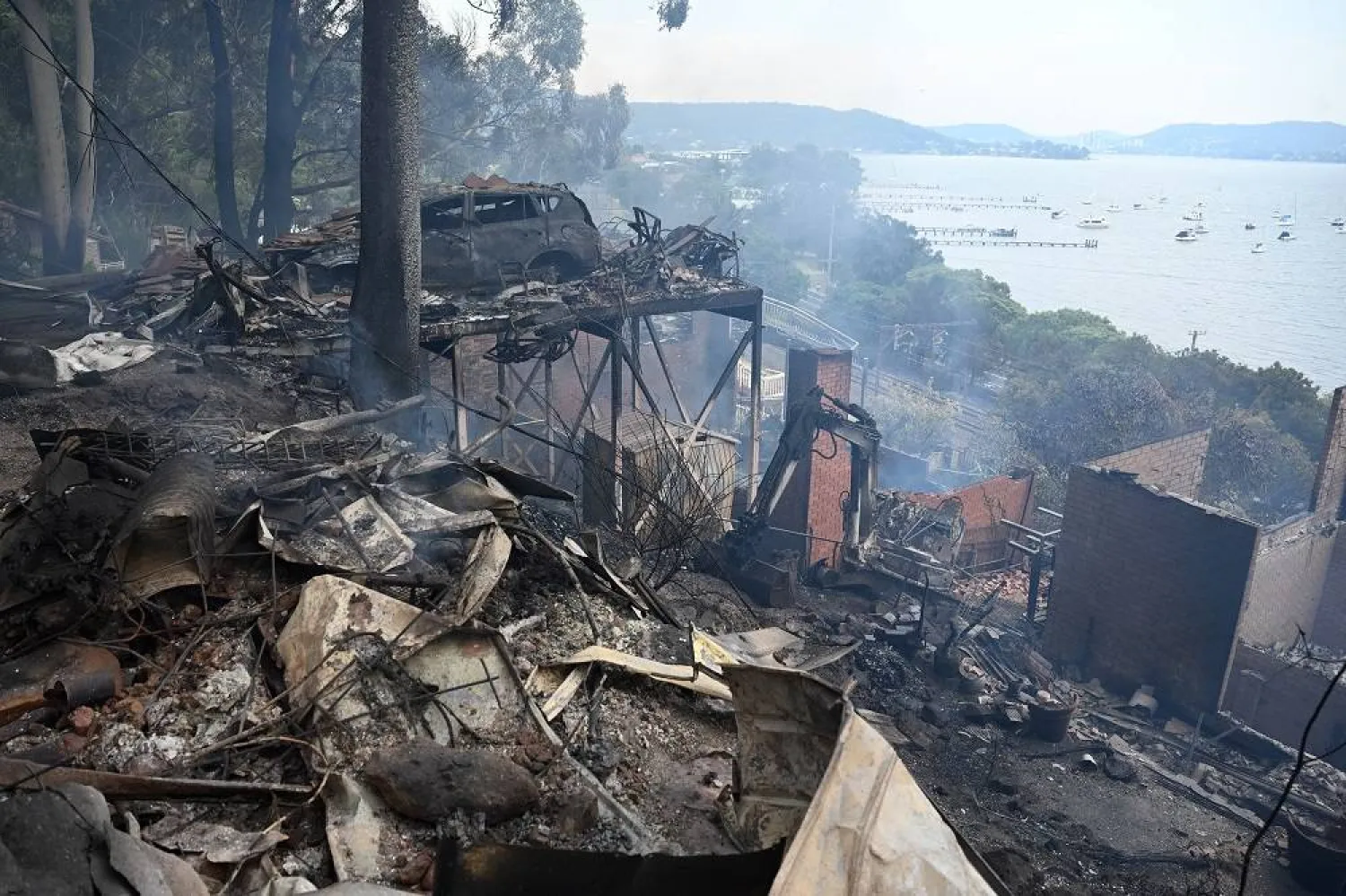Scientists have observed the largest-known rotating structure in the cosmos - a gargantuan thread-like assemblage of hundreds of galaxies, gas and dark matter that makes up a filament in the macrostructure of the universe called the cosmic web.
The filament, located about 140 million light-years from Earth, was observed by scientists primarily using the MeerKAT radio telescope located in South Africa, an array of 64 interlinked satellite dishes.
The rotating filament is astonishingly large, measuring about 50 million light-years long and 117,000 light-years wide. A light-year is the distance light travels in a year, 5.9 trillion miles (9.5 trillion km). By way of comparison, our Milky Way galaxy, which itself is part of a filament in the cosmic web, measures roughly 100,000 light-years in diameter.
"We believe that the universe on very large scales is made of a network-like distribution of galaxies, gas and dark matter," said University of Cambridge astrophysicist Madalina Tudorache, co-lead author of the study published this month in the journal Monthly Notices of the Royal Astronomical Society.
"This network is called the cosmic web, and it is formed of clusters, which are very dense clumps of matter, often formed of many groups of galaxies; voids - which are empty or almost empty regions of space; and filaments, which are strand-like structures which connect the very dense regions and border the voids," Tudorache said.
The rotating filament described in the new study is populated by nearly 300 galaxies of various sizes as well as gas and dark matter, the mysterious invisible stuff estimated to make up 27% of the cosmos.
Everything visible in the universe is made of ordinary matter - stars, planets, moons and all the stuff on Earth. It can be seen in wavelengths from infrared to visible light and gamma rays, but comprises only about 5% of the universe. Dark matter, on the other hand, does not absorb or reflect or emit light, but its presence is known through its gravitational effects on large scales.
The researchers determined that the filament is spinning by observing that the galaxies on either side of its central axis are moving through space in opposite directions, with the whole thing having a rotational velocity of about 246,000 miles (396,000 km) per hour.
"This is the largest individual spinning structure so far detected. Statistically, we believe there are other spinning structures, some of which could be larger. However, we have not been able to detect them directly with our current data and telescopes," said University of Oxford astrophysicist and study co-lead author Lyla Jung.
The researchers likened what they see in this filament to the amusement park attraction called a teacup ride.
"The teacup ride analogy explains the two levels of spinning motion that make this object unique," Jung said.
"First, each galaxy in the filament spins on its own. The gas and stars in each galaxy orbit around the galaxy center, like each teacup on the ride spins individually. Second, the entire cosmic filament also rotates. The filament is made of many galaxies, and this study demonstrates that the entire structure is rotating, like the teacup platform spins as a whole," Jung added.
In studying the cosmos, astrophysicists examine it at the smallest and largest scales. They look at tiny fundamental particles such as neutrinos. They look at objects such as comets, asteroids, moons, planets and stars that make up solar systems. They look at galaxies comprised of billions of stars and at clusters of galaxies. And then on the largest scales they look at filaments and other components of the cosmic web.
This study looks at the large end of things.
"This is a very exciting time to work in this field, as our capacity of discovering such structures is increasing with the advent of better radio and optical surveys. It will deepen our understanding of the universe," Tudorache said.









